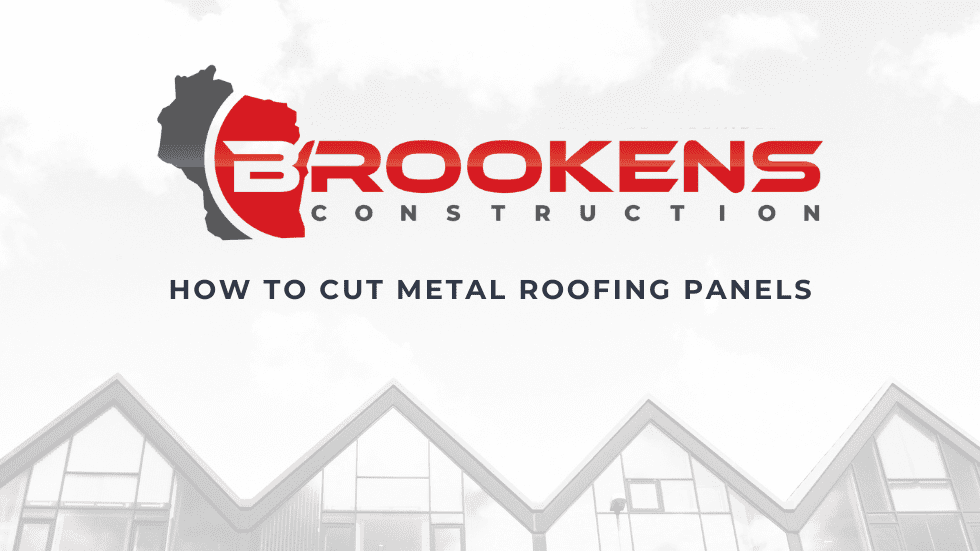Metal roofing panels offer durability, longevity, and aesthetic appeal, making them a popular choice for both residential and commercial properties. However, working with metal roofing requires precision and care, especially when it comes to cutting panels to size. Whether you’re installing a new roof or making repairs, knowing how to cut roofing panels correctly is essential for achieving professional results. Let’s explore some tips and techniques to help you master the art of cutting metal roofing panels.
Choosing the Right Roofing Tools for the Job
Before you begin cutting metal roofing panels, it’s important to gather the necessary tools and equipment. Here are some tools you’ll need:
- Circular Saw with a Metal-Cutting Blade: A circular saw equipped with a specialized metal-cutting blade is one of the most efficient tools for cutting metal roofing panels. Look for a blade specifically designed for cutting through metal to ensure clean, precise cuts.
- Electric Metal Shears: Electric metal shears are another excellent option for cutting metal roofing panels, especially if you’re working on intricate cuts or curves. These shears offer precision and control, allowing you to achieve smooth, accurate cuts with minimal effort.
- Nibbler: A nibbler is a handheld tool designed for cutting through sheet metal. While it may be slower than other cutting methods, a nibbler is ideal for making precise cuts, especially in tight spaces or corners.
- Safety Gear: Don’t forget to prioritize safety by wearing gloves, safety glasses, and hearing protection when working with metal roofing panels. Metal shards and debris can create hazards during the cutting process, so take precautions to protect yourself.
Best Cutting Techniques for Metal Roofing Panels
Once you have the necessary tools in hand, it’s time to master the cutting techniques for metal roofing panels. Here are some tips to help you achieve clean, accurate cuts:
- Measure Twice, Cut Once: Before making any cuts, carefully measure and mark the panels to guarantee accuracy. Use a straightedge or a chalk line to create a clear cutting guide. Double-check your measurements to minimize the risk of errors.
- Support the Panels: When cutting metal roofing panels, provide enough support to prevent distortion and ensure clean cuts. Use sawhorses or a stable work surface to support the panels securely. Avoid cutting metal roofing panels while they’re hanging or unsupported, as this can lead to bending or warping.
- Control the Speed and Pressure: When using a circular saw or electric shears, control the speed and pressure to maintain smooth, steady cuts. Avoid applying excessive force, as this can cause the blade to bind or kick back. Let the tool do the work, and guide it along the cutting line with a steady hand.
- Consider Cutting Direction: Depending on the type of panel you’re working with, you may need to consider the cutting direction to minimize burrs and sharp edges. Experiment with cutting techniques to determine the most effective approach for your specific project.
Finishing Touches and Safety Precautions
After cutting the roofing panels to size, take time to address any rough edges or burrs to ensure a professional finish. Here are some additional tips for finishing touches and safety precautions:
- Deburring: Use a metal file or deburring tool to smooth out any rough edges or burrs along the cut edges of the metal roofing panels. This step helps prevent injuries and ensures a clean, professional appearance.
- Clean-Up: Remove any metal shavings or debris from the work area to prevent tripping hazards and maintain a safe working environment. Dispose of scraps and waste materials responsibly.
- Store Tools Safely: When you’re finished cutting metal roofing panels, store your tools and equipment safely to prevent accidents and prolong their lifespan. Keep blades sharp and well-maintained for optimal cutting performance.
In conclusion, mastering the art of cutting metal roofing panels requires the right tools, techniques, and attention to detail. By choosing the appropriate cutting tools, mastering cutting techniques, and prioritizing safety, you can achieve clean, precise cuts that enhance the quality and longevity of your metal roof installation or repair project. Remember, practice makes perfect, so don’t hesitate to experiment and refine your skills to achieve professional results.

